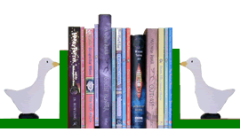In order to decide the best way to publish your book, you need to think about your goals. So let’s look at the most common ones.
I’ve written my family history and want to make it into a book to give to my relatives.
A print edition is a good choice here as it gives you something to actually put in people’s hands. A straightforward print-on-demand system like Createspace or Lulu can give you a paperback with no set up costs – you just buy the copies you need. However, as this is something to cherish, you may want to pay extra for a hardback. Lulu offer this as an option and there are also some companies online that specialise in this market by producing high quality books in small numbers. You may want to do an ebook too, but it’s definitely not essential.
It’s a good idea to get someone else to read your book before you publish it as a fresh eye will pick up mistakes you’ve missed, but it’s not necessary to have a professional editor. As you’re not selling the book, you don’t need an ISBN and you could create the cover yourself, maybe using a family picture.
I give talks on marketing to business professionals and I want to publish a book on my methods that I can sell at these events.
You obviously need a print edition, but print on demand isn’t the best solution if you expect to sell hundreds of copies. It will cost you less per copy if you have a short print run produced by a printer who specialises in books. It’s important that the book is good quality so make sure you have it professionally edited and that the layout and cover design are professional standard. Of course, some people may want to buy the book after the event so you could use Createspace to produce a POD version for sale on Amazon using the same ISBN as the print run. You might also want to produce an ebook version too as the costs of doing that are very low.
My novel has been rejected by every publisher and agent I have sent it to so I want to publish it myself instead of leaving it to moulder in a drawer. However, I’m not expecting to sell many so I don’t want to spend much money.
The cheapest option for you is to take the ebook only route. You can always add a print version later if the book starts selling well. Even though you have low expectations, you’re planning to sell the book so you need to make sure the book is technically competent. That means you need a copy editor or a friend to check the grammar, spelling and punctuation and to pick up other errors you can’t see because you are too close to the book. You won’t need an ISBN for selling on Amazon, but you will need a cover that looks competent.
My book has been traditionally published but it’s gone out of print. The rights have reverted to me so I want to self-publish in order to make it available to readers again.
Your book has already been edited so you just need to recreate it as a new book and create a new cover. If you haven’t got an electronic version of the text, you can either scan in the original book using optical character recognition, type it out again or pay someone to type it for you. Whichever option you choose, a proof read will be vital to pick up any errors that have crept in. OCR often produces some really weird ones – when I tried it, the pony pricked its cars!
An ebook is a good starting point: it lets you test the water at minimum cost, and you don’t need to bother with an ISBN in order to sell on Amazon. You can always add a POD print book if you wish, but you will need a fresh ISBN for that – you can’t reuse the one from the original edition.
I am sure my book is good enough to be traditionally published but I’m going to self-publish instead. I want to give it as good a chance as if I was following the traditional route.
In order to produce a professional quality book, you need to go through the same publishing steps that a traditional publisher would follow – structural edit, copy edit, proof read, professional quality cover and print layout – and you’ll need to pay for help with the steps you can’t manage by yourself. Aim for a print version as well an ebook as print gives you a greater chance of reviews and something to display and sell at events. As you want to look professional, buy your own ISBNs for use on the print edition and epub versions of the ebook. (You don’t need one for Kindle Direct Publishing.)
I want my book to be stacked in piles in bookshops, sold in airports and advertised in the mainstream media.
You need to go down the traditional route of submitting to publishers and agents because, at the moment, only traditional publishers have the distribution necessary to get your book into bricks and mortar bookshops. But being accepted by a traditional publisher doesn’t guarantee that you’ll meet your goals. Most traditionally published books don’t get the marketing hype that you are hoping for, and some get very little.marketing at all.
Diana Kimpton
